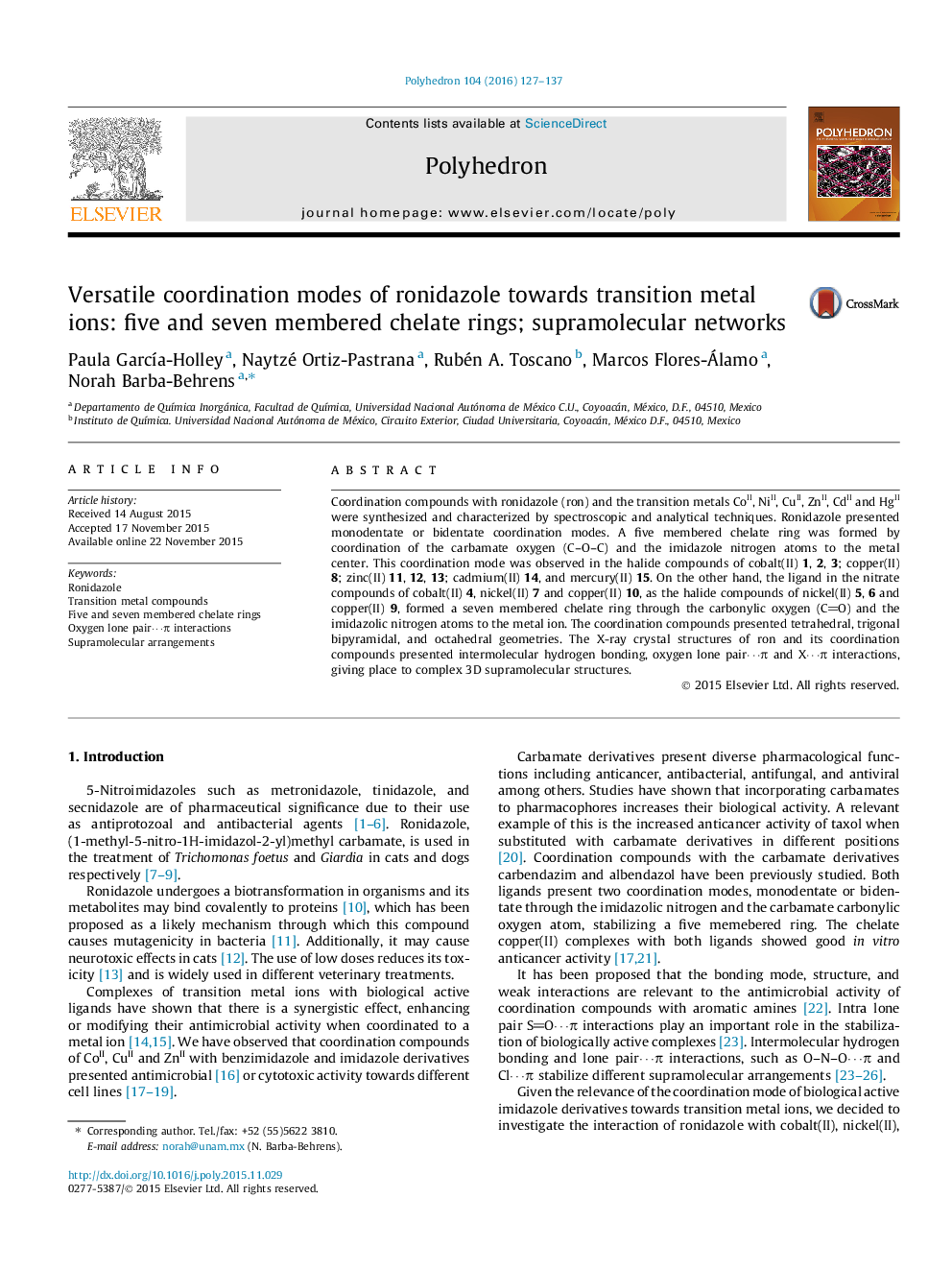| کد مقاله | کد نشریه | سال انتشار | مقاله انگلیسی | نسخه تمام متن |
|---|---|---|---|---|
| 1336648 | 1500236 | 2016 | 11 صفحه PDF | دانلود رایگان |
Coordination compounds with ronidazole (ron) and the transition metals CoII, NiII, CuII, ZnII, CdII and HgII were synthesized and characterized by spectroscopic and analytical techniques. Ronidazole presented monodentate or bidentate coordination modes. A five membered chelate ring was formed by coordination of the carbamate oxygen (C–O–C) and the imidazole nitrogen atoms to the metal center. This coordination mode was observed in the halide compounds of cobalt(II) 1, 2, 3; copper(II) 8; zinc(II) 11, 12, 13; cadmium(II) 14, and mercury(II) 15. On the other hand, the ligand in the nitrate compounds of cobalt(II) 4, nickel(II) 7 and copper(II) 10, as the halide compounds of nickel(II) 5, 6 and copper(II) 9, formed a seven membered chelate ring through the carbonylic oxygen (CO) and the imidazolic nitrogen atoms to the metal ion. The coordination compounds presented tetrahedral, trigonal bipyramidal, and octahedral geometries. The X-ray crystal structures of ron and its coordination compounds presented intermolecular hydrogen bonding, oxygen lone pair⋯π and X⋯π interactions, giving place to complex 3D supramolecular structures.
Upon coordination with transition metal atoms, ronidazole presented monodentate and bidentate coordination modes. In the halide complexes the ligand coordinated through the imidazolic nitrogen and the C–O–C carbamate oxygen atoms forming a five membered chelate ring. All nitrate compounds are octahedral with the ligand bound through the imidazolic nitrogen and the CO carbamate oxygen atoms forming a seven membered ring. 3D supramolecular structures are stabilized through intermolecular interactions such as lone pair NO···π, X···π and hydrogen bonding.Figure optionsDownload as PowerPoint slide
Journal: Polyhedron - Volume 104, 28 January 2016, Pages 127–137
